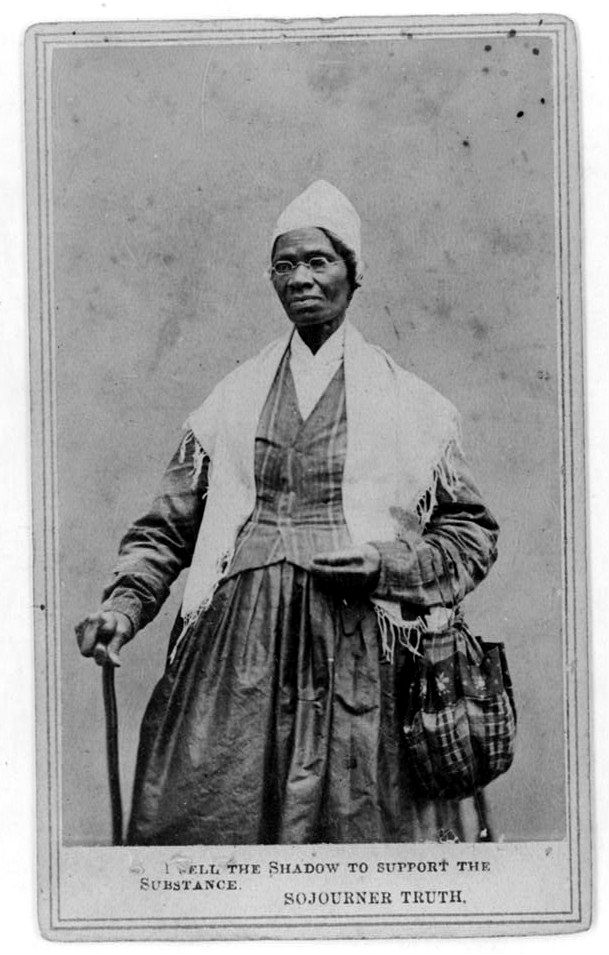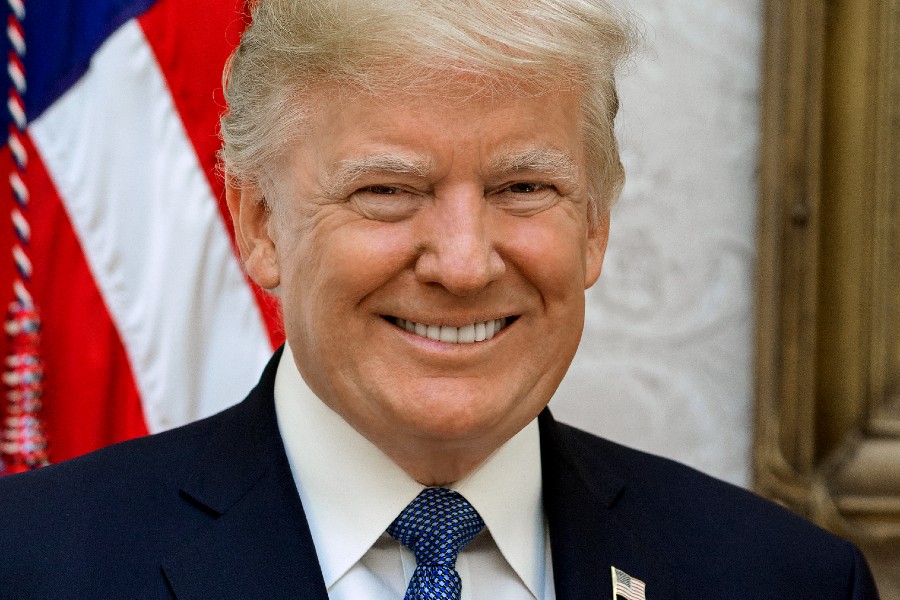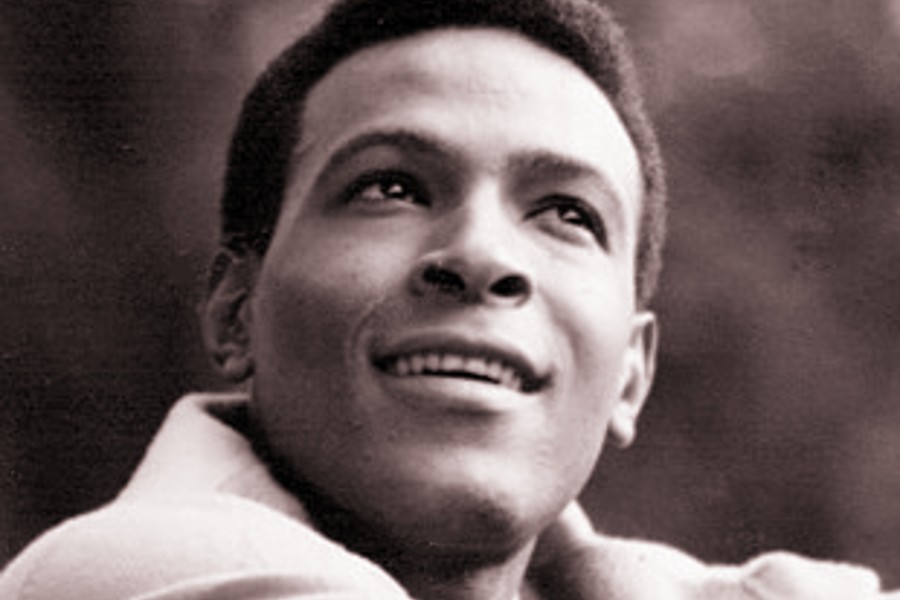 By Robert Walker
By Robert Walker
Bonita Oliver’s ‘Seeking Truth’ is described as a virtual museum that will tell the story of one of America’s greatest Civil and Women’s Rights Activists, Sojourner Truth.
‘Seeking Truth’ is an experience of sights, sounds, film, music and structured in vignette visuals and audio that will leave one with a feeling that they have come to know Sojourner Truth on a deeper and more personal level beyond the photos and current information that we can access about Sojourner’s remarkable life, once a slave who was helped to attain her freedom and then sued to have one of her children returned to her from slavery, and won.

Truth’s voice became one of the early advocates raising the consciousness about America’s history of slavery and women’s suffrage.
I spoke with ‘Seeking Truth’ creator, Bonita Oliver ahead of her launch of this virtual museum and why it has been a labor of love for her, and the impact Sojourner Truth’s life has had on her, she hopes will touch so many others.
Q&A
Robert Walker: Thank you for taking time out of your busy schedule to let our readers know more about you and your work with ‘Seeking Truth’. Tell us a little about your background as a creative artist?
Bonita Oliver: Bonita Oliver is also known as French Leave. I took on the latter because I wanted to honor my brilliant ancestors. “French leave” was a term used by folks to regard those who leave a party without saying goodbye to the hosts but was adopted as a code term used by those who were enslaved when they were going to run to freedom on a given night. I am a multidisciplinary artist originally from Springfield, Massachusetts- but now based in Harlem, NYC. I’ve lived in Harlem since 2003.
The truth about the USA’s dynamics with Black People is clearly visible here in some parts of Harlem.
I love this part of town- every aspect of it- the whole range of areas and lifestyles encompassed within Harlem. The truth about the USA’s dynamics with Black People is clearly visible here in some parts of Harlem. If real change truly is happening, you should start to see that reflected as you walk across 125th Street from the west to the east river. Let’s see that transformation happen.
My work is about transitions and transformation. Typically – for stage works- I use sound design, movement, and spoken word to tell a story. For film works, I most often use archival photos, public domain footage, sound, and movement to tell a story.
I will occasionally include natural earth material sculptures or acrylic paintings into my set design. The stories I tell are observations about what I recognize as injustices directed towards Black People. I process what I see, highlighting the energetic impact of these injustices which often leads to transformation- be it the depleting or uplifting kind.
I also focus on individuals taking transformation into their own hands – not only reacting to but directing change- Like Sojourner Truth. My aim with all of my work is to move audiences along through the stages of transformation.
I want to transition them through it all from one state of being to another – as they experience my art. I try to make my work as interactive or immersive as possible- so it’s more than a performance they are watching but a communal ritual of sorts. That is the goal- and for it to be a deeply penetrating, shared experience.
RW: Who were some of your early influences that made you realize you wanted to pursue your career, and who are the one (or two) creative artists you admire on the scene today?
BO: My father is my first major influence. I was a daddy’s girl. He was a musician and a devout Catholic. He went around singing and telling his story of re-awakening to Christ. I am not a Christian now, but it was through an experience I had with my dad at the age of three- which affirmed for me that I needed to make my “voice” heard. (By that I mean, I needed to make sure I was literally heard – but also, I needed to express everything inside of myself. Fully. No room for being shy) Thereafter… I’d say – my mother, my sister, and also my mentor – LuJuana Hood – they exposed me to many different arts programs.
The programs ended up connecting me to other folks who would become major influences on me. When I was young I was able to participate in so many enriching activities. I was exposed to folk and “fine” arts – and developed my critical thinking regarding how we look at these works. Some programs led me to expand the use of my body- African and Latin dance as well as Ballet and Modern, Tadashi Suzuki training as well as Viewpoints training… Mask-making classes and mask work- using them as a way to bring characters to life… Oh, back to my dad… Singing in my dad’s multicultural youth choir… Touring across Massachusetts and even to different parts of the country with him – with a culturally diverse group of kids and singing in Spanish as well as English… THAT was great exposure I received – to people of different communities- to their behaviors and perceptions. The different reactions the choir received on these tours said so much.
I observed and experienced interesting dynamics with that…Music lessons influenced me too, I shouldn’t say I’ve had NO formal training because I did go to classes. I just didn’t take much in or practice much at all- bouncing from one instrument to the next (never sticking with anyone) recorder, guitar, drums, percussion, piano… None of them stuck for me, but my general exposure to ALL of it had an overall impact on my ear- the way I perceive and arrange sound. In regards to popular artists, I grew up listening to… I was definitely influenced by vocalists like Sade, Nina Simone, Betty Carter, Sarah Vaughn, Anita Baker, MeShell N’Degeocello, Tori Amos, Jeff Buckley, PJ Harvey, Bjork… Cape Verdean music – especially Morna.
I grew up also watching true performers like Michael Jackson and Janet Jackson- even Madonna(with her appropriating self) I appreciated watching these performers who poured everything they have inside – all of their innate talent or training – or both, their desire, their lived experience, their observation, their enjoyment- into their work… I love to watch them tell a story with ALL of that. These are the things that have influenced me. I drank it all up. Currently, I am engaged by the work of immersive artists such as Grada Kilomba and then some crypto artists/curators. I loved the AR app Lady Phe launched in honor of Breonna Taylor- Breonna’s Garden. Look for that one if you’ve not heard of it. Please. She used augmented reality in a way that was very touching. It was beautiful to see Breonna like that.
RW: Tell us about ‘Seeking Truth’. You have described it as a multimedia virtual experience. How did this idea come to you and who was the inspiration for this first phase of the project?
BO: I was very inspired by Sojourner Truth– once I began to discover more about her. I realized how little I was taught about HER- the human being. I’d just read about her popular “Ain’t I a Woman” speech. I knew she was associated with Women’s rights as well as the anti-slavery movement. I knew her face – that she had a very dignified face with softness in her eyes- and an aura of humility. Whenever I would think of her in my mind’s eye – that’s what I would see. Then I’d think of Harriet Tubman. For some reason it was always like that. They seemed to be a pair in history classes or when attending historical events. Truth and Tubman were always the main two Black Women featured. All other historical Black Women were much more obscure – with the exception of Rosa Parks. We didn’t get her whole story either. Anyway – what prompted me to dig in deeper was a performance I was part of right before the global pandemic lockdown.
In the process of rehearsing, I dug into readings and videos about Sojourner. I quickly began to realize that “Ain’t I a Woman” is hardly the most interesting part of her story- at least not to me. What WAS most interesting to me is that Truth had a very decisive way of presenting herself to the public. She directed how her image was to be shared in a way she felt truly captured who she was. When photographs came along, she did not want to be painted any longer. She preferred photographs because they would be less subject to distortion. The painters would always apply their interpretation of who she was.
Photos allowed her to control how she would be seen. I was fascinated by the message she often printed on her Carte de Visites – “I sell the shadow to support the substance”. This was a woman who understood the power of her image and used that as well as her voice to spread her messages of freedom for those who were enslaved and for women’s rights. She would have been considered very PR savvy if alive in this day- probably a social media influencer too. That’s what really grabbed me about her.
I found that relevant in these times of social media filters, political propaganda, augmented reality and entertaining superficiality. Because of all this – I wanted to play with that a bit. I wanted to use all of the above in telling her story and show her still rising above as if a shooting star. I also incorporate stars into the visuals. One of my favorite quotes of hers is what she apparently said right before she passed, “I am not going to die, I’m going home like a shooting star.” I like that more so because it brings me back to a quote she recalled about her mom who would say to young Isabella (that was her name before she changed it to Truth), ”Those are the same stars and that is the same moon which look down upon your brothers and sisters, though they are ever so far from us and each other”
So, in the virtual space you see stars in different spots of the exhibition. I decided to make this virtual in part because I started this during the pandemic but also because it makes it accessible to people all over the world – for free. Well- as long as they have internet access. There is that barrier. Overall though – this felt the best way to connect people in an interactive way- and that holds up now post-pandemic quarantine. Now we don’t have to turn unvaccinated people away from the experience.
There is such division happening around that and I don’t feel anyone should be hindered from this kind of cultural enrichment. Virtual makes that possible. So people will enter a virtual museum of sorts. They will engage with historical documents, view photos of Sojourner Truth, see digital artworks and watch filmed poetry – together in the space as their avatar. The audience will be able to speak with each other and digest what they are taking in. I will (as my avatar) act as a docent, guiding them through the exhibit then leading them in some interactive exercises. This will give them an opportunity to impact each other through the experience they have just shared. That is my hope for this event.
RW: During our talk before this interview, we discussed both of our passions for wanting to tell the stories of people like Sojourner Truth, whom many of us have read and heard about as abolitionists, but we never get to know who they truly were and the impact they had?
What gave you the impetus to tell the story of Sojourner Truth, and how will this first phase play out in the virtual experience you have created?
BO: oops I think I already answered that above! I’ll add this… Another quote of Sojourners…
“It is the mind that makes the body.”
There is this movement happening now – of people waking up to the power of thoughts as energy – thoughts creating reality. Sojourner was clearly hip to that century ago. I wanted to show people that aspect of her- her embodied spiritual power.

RW: Who are the actresses that play Sojourner in the film, and what aspect of Sojourner’s life are they portraying if that is the correct way of asking the question?
BO: I am so blessed to have actors in this who each project a strong presence- in different ways. That was important to me. Presence. They all have that. Look at the photo of 4 of them. Ronnie Rochester, Cynthia St Juste, Nadhege Ptah, Jade Litaker, and not seen in the photo is Mecca Akbar. The 4 in the photo each portray a compartmentalized aspect of the Sojourner Truth I’ve imagined for the “film poetry”.
I call it that because it’s not a linear way of storytelling that I present here. Mecca portrays the wildcard version of Sojourner in this – and I don’t want to describe beyond that. I’d love for folks to just see this for themselves and draw their own conclusions. We can all then talk about it – right there in the space – unpack after watching.
RW: What is the next step now for ‘Seeking Truth’?
BO: I hope to actually make this a series of presentations. I want to feature other Black historical figures whose stories have been skewed throughout history. I am seeking out the truth about all of them. I want to invite others along with me on that journey.
RW: What is your hope that people will take away from participating in the ‘Seeking Truth’ virtual experience?
BO: I hope people will be open to a re-examination of the historical record. There is so much controversy about the so-called “critical race theory” but, listen… We know the influence early education has on the human mind. If we are filling children up with a history told only from one perspective THAT is going to have an impact.
I hope this will get folks to ask- is THAT impact the one we want on our children? I want everyone to consider that, but especially Black People. I hope Black People who are parents might come to Seeking Truth. I hope this inspires them to research for themselves and ensure their children are getting a well-rounded “mind diet” if you will. Don’t just send them to private schools and assume it’s a “good education”. If we raise our children differently we may see the positive outcomes we hope for. There might be a change that occurs within our wider community.
We might not complain as much about the messages in music -for example. As of now, what else could we expect would come out of the mouths of our babes when they are being educated from a perspective that sees no value in the experiences of their ancestors(or rather does but wants to suppress the awareness of that- because this way they stay in a state of psychic deterioration with increased material consumption). What’s the saying? He who controls the narrative controls the people? Or something like that… At which point does Education just become indoctrination and propaganda?
At which point does it simply become a mechanism of control? Yeah, we are beyond that point in my opinion. I also hope folks will consider new ways of recording history in the future- each of us telling our story with integrity and perhaps utilizing the tech we have available now to do so. I am considering the possibility of blockchain for that purpose.
RW: Where can Harlem World Magazine readers find you on social media?
BO: @frenchleave62317 on Instagram or check my website which currently has no SSL certificate. Just bypass that little warning. There are no monetary transactions being done on my site, so you are not at risk. A new site IS in process, however. A Web 3.0 version is being developed on BonitaOliver.NFT Soon enough that will be where you’ll find info about my future works. It will also be a space where some of those works will live. I want to get as far away from the internet protocol we’ve been using as possible.
RW: I want to thank you again for your time and for creating this virtual experience. As stated, the amazing stories of so many African Americans and people of color’s impact on this country, which has been hidden, will be told in a very imaginative way, thanks to you.
BO: Thank you! I hope this will be an enjoyable experience for folks. I appreciate the opportunity to share very much.
Read more Robert’s World articles here.
Robert Walker is an award-winning writer who graduated from Colgate University. After moving to Atlanta, Georgia he worked at the Centennial Olympic Games. As a freelance Public Relations Consultant, Robert’s clients included the NBA’s only licensed female designer of women’s sports apparel, Deborah Williams of Her Game 2; The Sickle Cell Anemia Disease Association of America; Gospel Artist, 2009 NAACP Image Award nominee, Omega Bugembe Okello; famed Dancer and Actress, Trina Parks, Filmmaker, Nicole Franklin, Jazz Singer, Freda Payne and actresses, and Dr. Tommie Tonea Stewart, to name a few. He has been featured on HubPages, Gospel Innovation, SHEEN Magazine, Black Star News, Harlem World Magazine and HBCU Connect. He is a recipient of the Silver Award at the World Fest Film Festival, he worked with Tony-nominated award-winning actress, Sheryl Lee Ralph, and her ‘The Sheryl Lee Ralph D.I.V.A. Talk Radio Show’. Today, he works as a film writer/producer, along with colleague and author, Olivier Stephenson, telling the remarkable untold stories of pioneering women of color who have impacted our nation’s popular culture. https://about.me/robertprguy
Photo credit: 1-3) Source.
Become a Harlem Insider!
By submitting this form, you are consenting to receive marketing emails from: Harlem World Magazine, 2521 1/2 west 42nd street, Los Angeles, CA, 90008, https://www.harlemworldmagazine.com. You can revoke your consent to receive emails at any time by using the SafeUnsubscribe® link, found at the bottom of every email. Emails are serviced by Constant Contact








